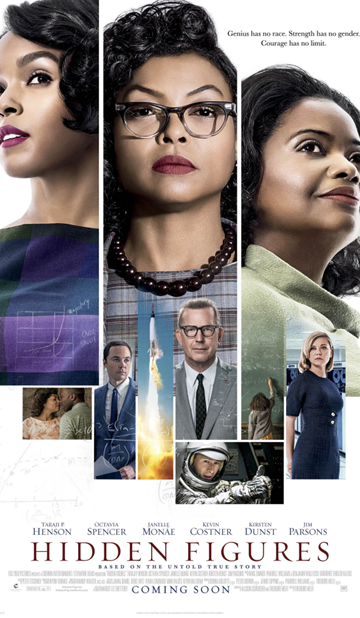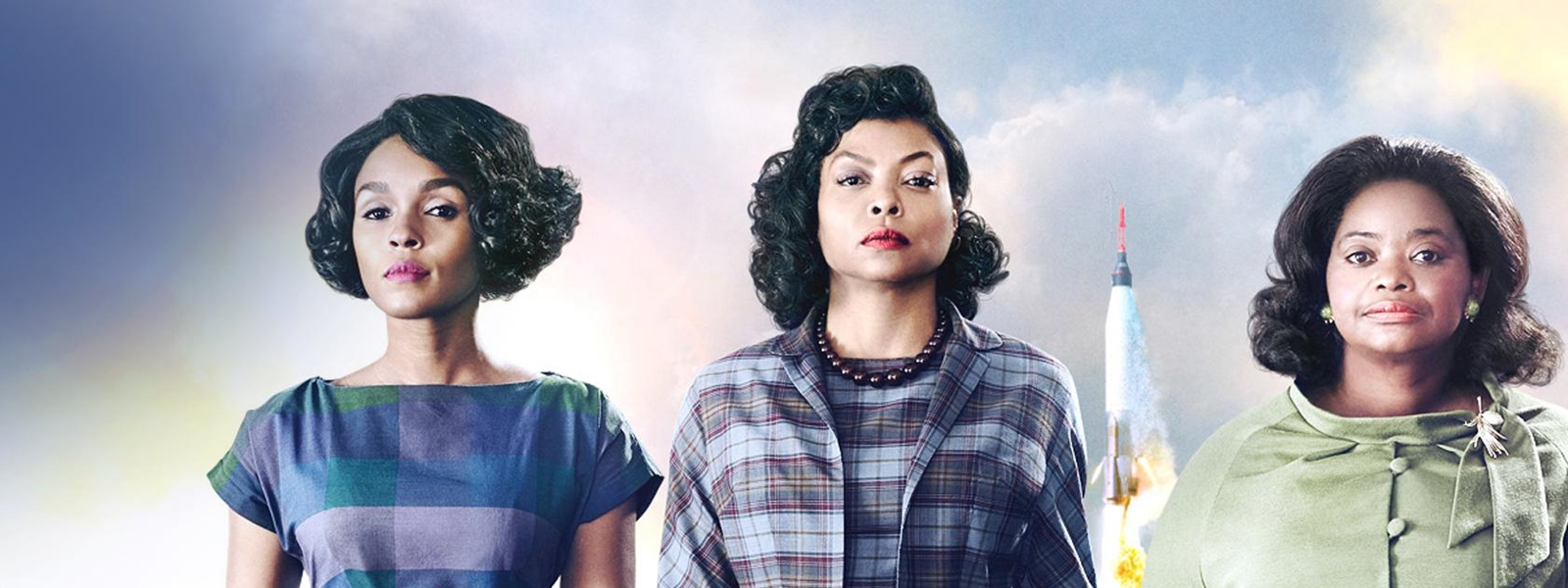Director – Theodore Melfi
Starring – Taraji P. Henson, Octavia Spencer, Janelle Monáe, Kevin Costner, Jim Parsons, Mahershala Ali, Aldis Hodge and Glen Powell
Runtime – 127 minutes
Release date – 17th February 2017
Certificate – PG
Plot – Three female African-American mathematicians play a pivotal role in astronaut John Glenn’s launch into orbit. Meanwhile, they also have to deal with racial and gender discrimination at work.

REVIEW:
After reviewing a string of big budget blockbusters recently, I was in the mood for something smaller in scale but rich in substance. Something that didn’t rely on explosions or CGI to tell a powerful story. Hidden Figures had been sitting patiently on my watchlist for far too long, and I finally decided it was time to chip away at it. What better way to shift gears than with a historical biopic rooted in resilience, brilliance, and humanity? Within minutes, I knew I’d made the right call. From the very first scene with three women stranded by the side of the road, effortlessly bantering with each other, it was clear this would be a charming, character-driven journey.
This film is a triumph of warmth and intelligence. It’s a feel-good movie in the truest sense, without ever feeling cheesy or overly sentimental. Taraji P. Henson, Octavia Spencer, and Janelle Monáe are simply magnetic. Their comedic timing, emotional range, and natural chemistry give this story its pulse. The film juggles serious themes with moments of levity so gracefully that you’re constantly engaged. One moment you’re laughing, the next you’re outraged. Their performances, especially in the quieter, more personal moments, carry so much power without ever tipping into melodrama.
What made Hidden Figures hit hardest for me was how it reminded us that brilliance often goes unseen when hidden behind prejudice. Watching Katherine Johnson (played by Taraji P. Henson) navigate the cruel limitations imposed on her by both racism and sexism made my blood boil. One scene in particular, when she quietly makes herself a cup of coffee in a room full of white men and endures their glares, is quietly devastating. You could call that sort of behaviour a “product of its time,” but to me, that excuse holds no weight. I’m completely against racism and sexism in every form, and even though I can’t begin to fully understand the hardships these women faced, as a white male, I was still deeply affected. It speaks to the film’s power that I felt a visceral sense of injustice watching these scenes unfold.
And with that injustice comes so many moments of triumph. There were scenes where I couldn’t help but clap or smile. Like when Dorothy Vaughan (Spencer) teaches herself and her team how to program the IBM, proving their irreplaceable value. Or when Kevin Costner’s character smashes down the “coloured bathroom” sign and declares, “Here at NASA, we all pee the same colour.” One of my favourite moments, though, was Katherine simply holding a redacted document up to the light to uncover the hidden data. It’s such a small, clever move, but it encapsulates her quiet defiance and genius beautifully.
The film also doesn’t shy away from reminding us that all of this was happening against the backdrop of the space race. The scenes of John Glenn’s launch and his tense orbit around Earth add genuine suspense. Director Theodore Melfi deserves credit for crafting space scenes that feel every bit as tense and cinematic as the most high-octane thrillers, even though the heart of the film is grounded firmly on Earth. Watching those tense moments of reentry play out while Katherine frantically solves last-minute math only heightened my admiration for how seamlessly the film blended history with personal stakes.
If I had one complaint, it’s more about a missed opportunity than a misstep. Jim Parsons plays Paul Stafford, a character who spends most of the film subtly and overtly undermining Katherine. While he plays the role well, the film never gives us a satisfying moment of reckoning for him. Given how central his resistance is to her journey, I would have appreciated seeing some glimpse of regret or humility from his character. Just a small beat acknowledging that Katherine had earned not only a seat at the table, but his respect, would’ve gone a long way.
That said, it doesn’t take away from the overall emotional resonance of the film. Hidden Figures succeeds because it celebrates intellect and perseverance in the face of institutional ignorance. It’s a story that feels long overdue, and one that’s told with such care and charisma that you can’t help but be drawn in. Even when you know the rough outline of how events will play out, the film finds power in the details. The stolen glances, the small victories, the friendships that form under pressure.
In the end, Hidden Figures is exactly what I was hoping for: a moving, uplifting, and thought-provoking film that’s easy to watch but impossible to forget. If you’re in the mood for something sincere, inspiring, and anchored by three stellar performances, give this one a go. I’m glad I finally crossed it off my watchlist, and honestly, I wish I’d done it sooner.



